<Back to Index>
- Prime Minister of Belgium Paul Henri Charles Spaak, 1899
- Politician and Philosopher Richard Nikolaus Eijiro von Coudenhove - Kalergi, 1894
PAGE SPONSOR
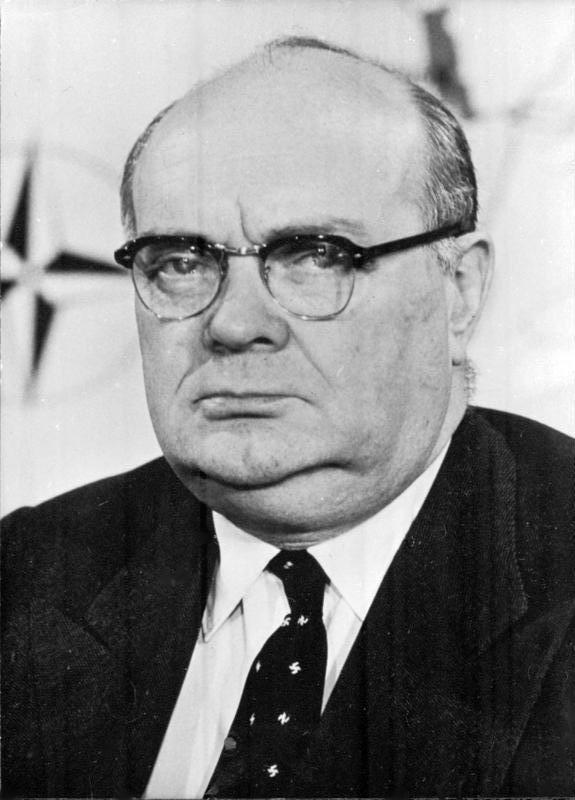
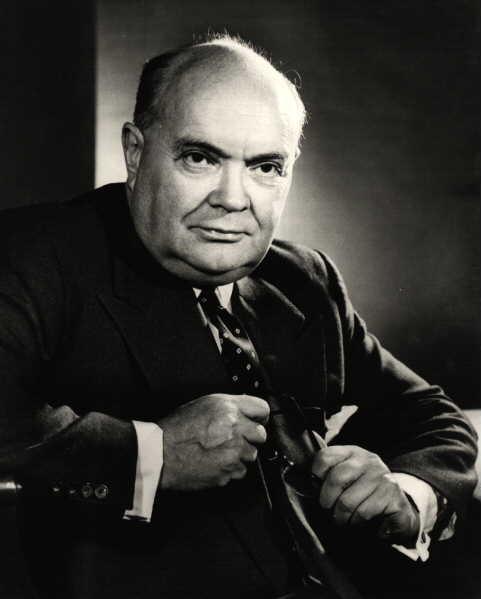
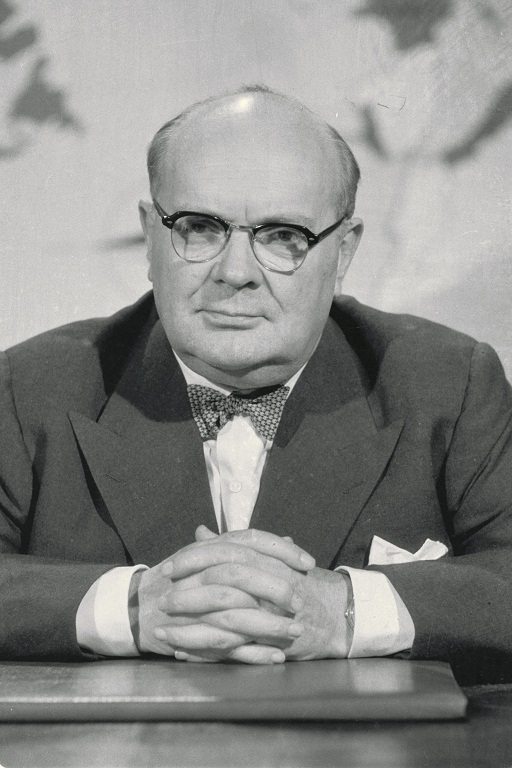
Paul Henri Charles Spaak (25 January 1899 – 31 July 1972) was a Belgian Socialist politician and statesman.
Paul - Henri Spaak was born on 25 January 1899 in Schaerbeek, Belgium, to a distinguished Belgian family. His grandfather, Paul Janson was an important member of the Liberal Party. His mother, Marie Janson was a socialist, and the first woman to enter the Belgian Senate, and his father, Paul Spaak was a poet and playwright. Other noted members of his family included Paul Henri's uncle Paul - Emile Janson who served as Prime Minister of Belgium from 1937 to 1938 and his niece, Catherine Spaak, a movie star.
During World War I, Spaak attempted to join the Belgian Army, but was captured by the Germans, and spent the next two years in a German prison camp. At the end of the war, Spaak was released from captivity and entered the Université Libre de Bruxelles, where he studied law. During the same period, Spaak was also a tennis star, and played for the Belgian team in the 1922 Davis Cup.
After receiving his law degree, Spaak practiced law in Brussels,
where he "excelled in defending Communists charged with conspiring
against the security of the realm", including Fernando de Rosa, an Italian student who attempted to kill Crown Prince Umberto of Italy during a state visit by the prince to Brussels.
He became a member of the Socialist Belgian Labor Party in 1920. He was elected deputy in 1932.
In 1935 he entered the cabinet of Paul Van Zeeland as Minister of Transport. In February 1936 he became Minister of Foreign Affairs, serving first under Zeeland and then under his uncle, Paul - Émile Janson. From May 1938 to February 1939 he was Prime Minister for the first time. In 1938, he allowed Herman Van Breda to smuggle the legacy of Edmund Husserl out of Nazi Germany to Belgium through the Belgian Embassy in Berlin.
He was Foreign Minister again from September 1939 until August 1949 under the subsequent Prime Ministers Hubert Pierlot, Achille Van Acker and Camille Huysmans. During this time he twice was appointed Prime Minister as well, first from 13 to 31 March 1946 – the shortest government in Belgian history, and again from March 1947 to August 1949.
He again was foreign minister from April 1954 to June 1958 in the cabinet of Achille Van Acker and from April 1961 to March 1966 in the cabinets of Théo Lefèvre and Pierre Harmel.
Spaak was an advocate of Belgium's "independence policy" before World War II. During the German invasion in May 1940, he fled to France and tried to return during the summer but was prevented by the Germans, even though he was Foreign Minister at the time. Hence, against his wishes he settled in Britain.
Spaak gained international prominence in 1945, when he was elected
chairman of the first session of the General Assembly of the United
Nations. During the third session of the UN General Assembly
in Paris, Spaak apostrophized the delegation of the Soviet Union with
the famous words: "Messieurs, nous avons peur de vous" (Sirs, we are
afraid of you).
Spaak became a staunch supporter of regional co-operation and collective security after 1944. While still in exile in London, he promoted the creation of a customs union uniting Belgium, the Netherlands and Luxembourg (Benelux). In August 1949, he was elected President of the first session of the Consultative Assembly of the Council of Europe. From 1952 to 1953, he presided the Common Assembly of the European Coal and Steel Community.
In 1955, the Messina Conference of European leaders appointed him as chairman of a preparatory committee (Spaak Committee) charged with the preparation of a report on the creation of a common European market. The so-called "Spaak Report" formed the cornerstone of the Intergovernmental Conference on the Common Market and Euratom at Val Duchesse in 1956 and led to the signature, on 25 March 1957, of the Treaties of Rome establishing a European Economic Community and the European Atomic Energy Community (Euratom). Paul - Henri Spaak signed the treaty for Belgium, together with Jean Charles Snoy et d'Oppuers. His role in the creation of the EEC earned Spaak a place among the Founding fathers of the European Union.
When in 1962 France's President de Gaulle attempted to block both British entry to the European Communities and undermine their supranational foundation with the Fouchet Plan, Spaak working with Joseph Luns
of the Netherlands rebuffed the idea. He was a staunch defender of the
independence of the European Commission. "Europe of tomorrow must be a supranational Europe," he declared. In honor of his work for Europe, the first building of the European Parliament in Brussels was named after him.
In 1956, he was chosen by the Council of the North Atlantic Treaty Organisation to succeed Lord Ismay as Secretary General. He held this office from 1957 until 1961, when he was succeeded by Dirk Stikker. Spaak was also instrumental in the choice of Brussels as the new seat of the Alliance's HQ in 1966.
This was also the year of his last European campaign, when he played an important conciliatory role in resolving the "empty chair crisis" by helping to bring France back into the European fold. In 1957 he received the Karlspreis (engl.: Charlemagne Award) an Award by the German city of Aachen to people who contributed to the European idea and European peace.
On 21 February 1961, Spaak was presented with the Presidential Medal of Freedom by US President John Kennedy.
Paul - Henri Spaak retired from politics in 1966. He was a member of the Royal Belgian Academy of French Language and Literature. In 1969, he published his memoirs in two volumes titled Combats inachevés ("The Continuing Battle"; literally, "unfinished fights"). Spaak died aged 73, on 31 July 1972 in his home in Braine - l'Alleud near Brussels, and was buried at the Foriest graveyard in Braine - l'Alleud.
He and his wife Marguerite Malevez had two daughters — Antoinette Spaak led the Democratic Front of Francophones — and a son, the diplomat Fernand Spaak. After her death in August 1964, he married Simone Dear in April 1965. His brother was the screenwriter Charles Spaak. His niece was the actress Catherine Spaak one of his grandsons is the artist Anthony Palliser.
During the 1940s, during his time in New York with the United Nations,
he also had an affair with the American fashion designer Pauline Fairfax Potter (1908 – 1976).
Spaak has left such a legacy behind, that he was the main motive for one of the most recent and famous gold commemorative coin: the Belgian 3 pioneers of the European unification commemorative coin, minted in 2002. The obverse side shows a portrait with the names Robert Schuman, Paul - Henri Spaak and Konrad Adenauer.
In the election for De Grootste Belg (The Greatest Belgian) Spaak ended on the 40th place in the Flemish version and on the 11th place in the Walloon version.
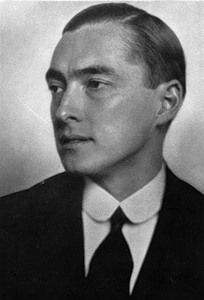
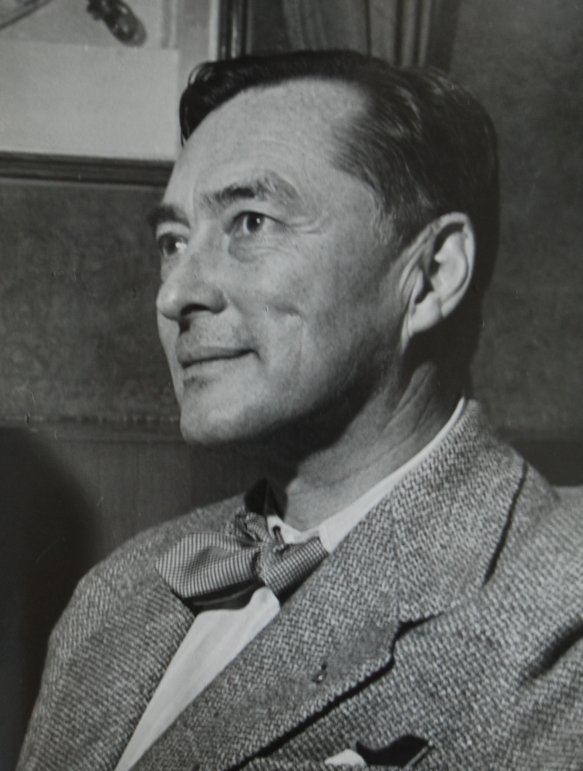
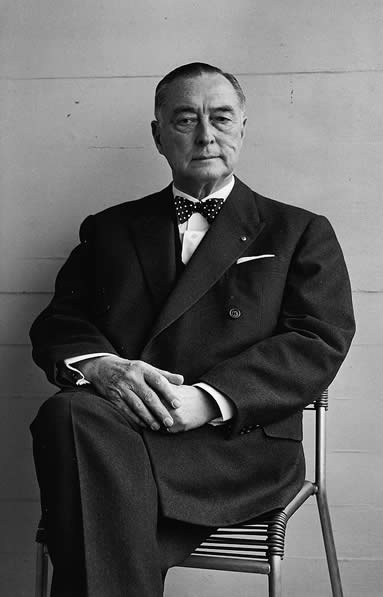
Richard Nikolaus Eijiro von Coudenhove - Kalergi (German: Richard Nikolaus Eijiro Graf Coudenhove - Kalergi; Japanese: リヒャルト・ニコラウス・栄次郎・クーデンホーフ=カレルギー Rihiyăruto - Nikorausu 栄次郎 (= Eijiro) Kūdenhōfu - Karerugī; November 16, 1894 – July 27, 1972) was an Austrian politician, geopolitician, philosopher and count of Coudenhove - Kalergi. His parents were Heinrich von Coudenhove - Kalergi, Austrian diplomat, and Mitsuko Aoyama, the daughter of an antiques dealer and oil tycoon in Tokyo.
His first book, titled Pan - Europa was published in 1923, contained a membership form for the Pan - Europa movement. Coudenhove - Kalergi's movement held its first Congress in Vienna in 1926. In 1927 Aristide Briand was elected honorary president. Personalities attending included: Albert Einstein, Thomas Mann and Sigmund Freud.
Richard Coudenhove - Kalergi was the second son of Heinrich Coudenhove - Kalergi (1859 – 1906), an Austro - Hungarian count and diplomat of mixed European origin, and Mitsuko Aoyama
(1874 – 1941). His father, who spoke sixteen languages and embraced
travel as the only means of prolonging life, had prematurely abandoned a
career in the Austrian diplomatic service that took him to Athens, Constantinople, Rio de Janeiro, and Tokyo,
to devote himself to study and writing. His parents met when the future
countess helped the Austro - Hungarian diplomat stationed in Japan after he fell off a horse. In commenting on their union, Whittaker Chambers described the future originator of Pan - Europe as "practically a Pan - European organization himself". He elaborated: "The Coudenhoves were a wealthy Flemish family that fled to Austria during the French Revolution. The Kalergis were a wealthy Cretan
family. The line has been further crossed with Poles, Norwegians,
Balts, French and Germans, but since the families were selective as well
as cosmopolitan, the hybridization has been consistently successful." The Kalergis family roots trace to the Byzantine royalty via Venetian aristocracy, connecting with the Phokas
imperial dynasty. In 1300, Coudenhove - Kalergi's ancestor Alexios
Phokas - Kalergis signed the treaty that made Crete a dominion of Venice.
Coudenhove - Kalergi passed his adolescence on Bohemian family estates in Ronsperg, known today as Poběžovice. His father personally taught his two sons Russian and Hungarian and toughened them both physically and morally. He took them on long walks in all weathers, made them sleep on straw mattresses and take cold showers, and taught them to shoot and fence so well that no one would ever dare challenge them. He also took them to Mass every Sunday. On every Good Friday, as the liturgy came to the exhortation "oremus et pro perfidis Judaeis" ("Let us also pray for the faithless Jews"), the old count allegedly rose and walked out of the church in a protest against this supposed expression of antisemitism.
Coudenhove - Kalergi studied at the Ecole épiscopale de Brixen (Brixen) before attending the Theresianische Akademie in Vienna from 1908 till 1913. He obtained his doctorate in philosophy with a thesis on Die Objectivität als Grundprinzip der Moral (The Objectivity as Fundamental Principle of Morals) in 1917 from the University of Vienna. While still in his student years, he married the famous Viennese actress Ida Roland in April 1915. His marriage to a divorcée thirteen years his senior and a commoner, caused a temporary split with his family.
Aristocratic in his origins and elitist in his ideas, Coudenhove - Kalergi identified and collaborated with such politicians as Engelbert Dollfuss, Kurt Schuschnigg, Otto von Habsburg, Winston Churchill, and Charles de Gaulle. His ideal political constituent was a gentleman, a person adhering to honesty, fair play, courtesy, and rational discourse. He strove to replace the nationalist German ideal of racial
community with the goal of an ethnically heterogeneous and inclusive
European nation based on a communality of culture, a nation whose
geniuses were the "great Europeans" such as abbé de Saint - Pierre, Kant, Napoleon, Giuseppe Mazzini, Victor Hugo, and Friedrich Nietzsche.
Coudenhove - Kalergi is recognized as the founder of the first popular movement for a united Europe. His intellectual influences ranged from Rudolf Kjellén and Oswald Spengler to Arthur Schopenhauer and Friedrich Nietzsche. In politics, he was an enthusiastic supporter of "fourteen points" made by Woodrow Wilson on 8 January 1918 and pacifist initiatives of Kurt Hiller. In the early 1920s he joined a Masonic lodge at Vienna, where he would reach several degrees. In 1922 he co-founded the Pan-European Union (PEU) with Archduke Otto von Habsburg, as "the only way of guarding against an eventual world hegemony by Russia". In the following year he published a manifesto entitled Pan - Europa, each copy containing a membership form which invited the reader to become a member of the Pan - Europa movement. He favored social democracy as an improvement on "the feudal aristocracy of the sword" But his ambition was to create a conservative society that superseded democracy with "the social aristocracy of the spirit".
From April 1924 to March 1938, Coudenhove - Kalergi worked as an editor and principal author of the journal Paneuropa. He published his main work, the three volumes of Kampf um Paneuropa (The fight for Paneuropa) between 1925 and 1928. In 1926, the first Congress of the Pan - European Union met in Vienna, and the 2,000 delegates elected Coudenhove - Kalergi president of the Central Council. His original plan was to divide the world into five groups of states: a United States of Europe that would link continental countries with French possessions in Africa; a Pan - American Union encompassing North and South Americas; the British Commonwealth circling the globe; the USSR spanning Eurasia; and a Pan - Asian Union whereby Japan and China would control most of the Pacific. The only hope for a Europe devastated by war was to federate along lines that the Hungarian - born Romanian Aurel Popovici and others had proposed for Austria - Hungary. According to Coudenhove - Kalergi, Pan - Europe would encompass and extend a more flexible and more competitive Austria - Hungary, with English serving as world language, spoken by everyone in addition to his native tongue. He predicted that individualism and socialism would learn to cooperate instead of compete, and urged that capitalism and communism cross - fertilize each other just as the Protestant Reformation had spurred the Catholic Church to regenerate itself.
Coudenhove - Kalergi attempted to enlist prominent European politicians in his pan - European cause. He offered the presidency of the Austrian branch of the Pan - European Union to Ignaz Seipel, who accepted the offer unhesitatingly and rewarded his beneficiary with an office in the old Imperial palace in Vienna. Coudenhove - Kalergi had less success with Tomáš Masaryk, who referred him to his uncooperative Prime Minister Edvard Beneš. The idea of pan - Europe elicited support from politicians as diverse in their orientation as Carlo Sforza and Hjalmar Schacht. Although Coudenhove - Kalergi found himself unable to sway Benito Mussolini, his ideas influenced Aristide Briand and his inspired speech in favor of a European Union in the League of Nations on 8 September 1929, as well as his famous 1930 "Memorandum on the Organization of a Regime of European Federal Union". Meanwhile, his Pan - Europeanism earned vivid loathing from Adolf Hitler, who excoriated its pacifism and mechanical economism and belittled its founder as "everybody's bastard".
After the annexation of Austria by the Third Reich in 1938, Coudenhove - Kalergi fled to Czechoslovakia, and thence to France. As France fell to Germany in 1940, he escaped to the United States by way of Switzerland and Portugal. During the war, he continued his call for the unification of Europe along the Paris - London axis. His wartime politics and peripeties served as the real life basis for fictional Resistance hero Victor Laszlo, the Paul Henreid character in Casablanca. He published his work Crusade for Paneurope in 1944. His appeal for the unification of Europe enjoyed some support from Winston Churchill, Allen Dulles, and "Wild Bill" Donovan. After the announcement of the Atlantic Charter on 14 August 1941, he composed a memorandum entitled "Austria's Independence in the light of the Atlantic Charter" and sent it to Winston Churchill and Franklin Delano Roosevelt. In his position statement, Coudenhove - Kalergi took up the goals of the charter and recommended himself as head of government in exile. Both Churchill and FDR distanced themselves from this document. From 1942 until his return to France in 1945, he taught at the New York University, which appointed him professor of history in 1944.
The end of war inaugurated a revival of pan - European hopes. Winston Churchill's celebrated speech of 19 September 1946 to the Academic Youth in Zurich commended "the exertions of the Pan - European Union which owes so much to Count Coudenhove - Kalergi and which commanded the services of the famous French patriot and statesman Aristide Briand." In November 1946 and the spring of 1947, Coudenhove - Kalergi circulated an enquiry addressed to members of European parliaments. This enquiry resulted in the founding of the European Parliamentary Union (EPU), a nominally private organization that held its preliminary conference on 4–5 July at Gstaad, Switzerland, and followed it with its first full conference from 8 to 12 September. Speaking at the first EPU conference, Coudenhove - Kalergi argued that the constitution of a wide market with a stable currency was the vehicle for Europe to reconstruct its potential and take the place it deserves within the concert of Nations. On less guarded occasions he was heard to advocate a revival of Charlemagne's empire. In 1950 he received the first annual Karlspreis (Charlemagne Award), given by the German city of Aachen to people who contributed to the European idea and European peace.
In 1955 he proposed the Beethoven's Ode to Joy as the music for the European Anthem, a suggestion that the Council of Europe took up 16 years later.
In the 1960s Coudenhove - Kalergi urged Austria to pursue "an active policy of peace", as a "fight against the Cold War
and its continuation, the atomic war". He advocated Austrian
involvement in world politics in order to keep the peace, as "active
neutrality". He continued his advocacy of European unification in
memoranda circulated to the governments of the Federal Republic of
Germany, France, the United Kingdom and Italy. He recommended
negotiations between the European Community and the European Free Trade Association
towards forming a "European customs union" that would be free of
political and military connections, but would eventually adopt a
monetary union.
In his attitudes towards race and religion, Coudenhove - Kalergi continued the work of his father. Heinrich Coudenhove - Kalergi was a Roman Catholic with no Jewish blood. In his youth, he was an antisemite. He had expected to confirm his antipathy towards the Jews when he started working on his treatise Das Wesen des Antisemitismus (The Essence of Antisemitism). But he came to a different conclusion by the time he published his book in 1901. Following an ironic critique of the new racial theories, he declared that the essence of antisemitism amounted to nothing more credible than fanatical religious hatred. He traced that fanaticism to religious bigotry that originated in the promulgation of Torah under Ezra. According to the elder Coudenhove - Kalergi, Jewish religious bigotry provoked opposition from the relatively tolerant Greco - Roman polytheists, eliciting their anti - Judaic reaction. Antisemitism came into existence when Christianity and Islam took over the intolerant fanaticism of Judaism, and turned it against the Jews. Thus Heinrich Coudenhove - Kalergi credited the Jews with originating religious intolerance, and condemned it as a violation of genuine religious principles. He branded every sort of anti - Judaism unchristian. He further urged liberal Christians and Jews to ally in protecting both of their religions, and religion as such, against the emerging menace of secularism.
In spite of his opposition to simplistic racial theory, Heinrich Coudenhove - Kalergi agreed that Jews are racially distinct. Although he pointed out that there is no Semitic race, because Semitic is a language family, he equivocated by also remarking that the charges that Semites were uncreative were belied by civilizations formed by the Assyrians and Babylonians, who spoke Semitic languages. He further sought to defend the Jews against bigoted charges of parasitic greed and cowardice with anecdotal counterexamples of Jewish industriousness and martial courage.
In 1932 Richard Coudenhove - Kalergi composed a preface for a new edition of his father's condemnation of antisemitism, reissued by his own publishing house. In 1933 he responded to the ascendance of National Socialism by collaborating with Heinrich Mann, Arthur Holitscher, Lion Feuchtwanger, and Max Brod in writing and publishing the pamphlet Gegen die Phrase vom jüdischen Schädling (Against the Phrase 'Jewish Parasite').
Coudenhove - Kalergi complemented his liberal views of the political role of the Jews with distinctive advocacy of race mixing. In his book Praktischer Idealismus (Practical Idealism) he wrote:
- "The man of the future will be of mixed race. Today's races and classes will gradually disappear owing to the vanishing of space, time, and prejudice. The Eurasian - Negroid race of the future, similar in its appearance to the Ancient Egyptians, will replace the diversity of peoples with a diversity of individuals."
- "Instead of destroying European Jewry, Europe, against its own will, refined and educated this people into a future leader - nation through this artificial selection process. No wonder that this people, that escaped Ghetto - Prison, developed into a spiritual nobility of Europe. Therefore a gracious Providence provided Europe with a new race of nobility by the Grace of Spirit. This happened at the moment when Europe’s feudal aristocracy became dilapidated, and thanks to Jewish emancipation."
- Coudenhove - Kalergi is buried at Gruben near Gstaad.